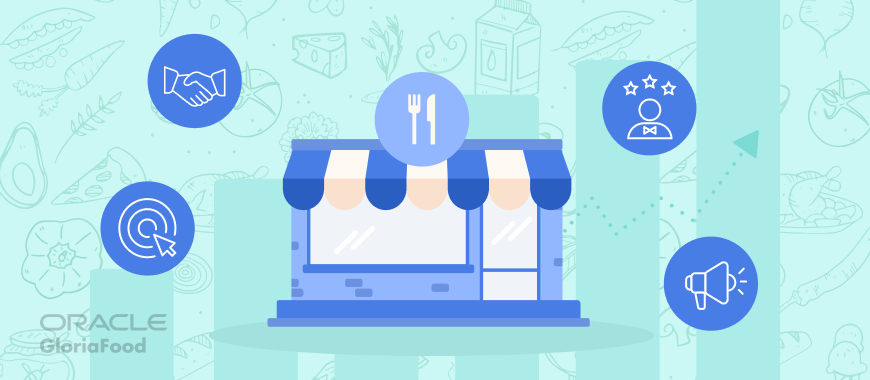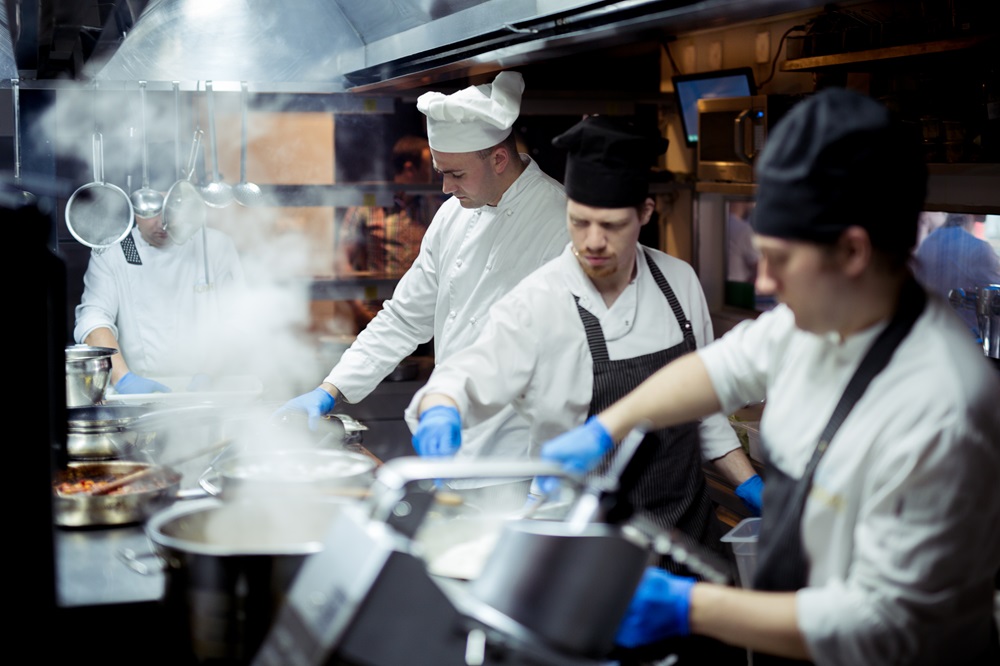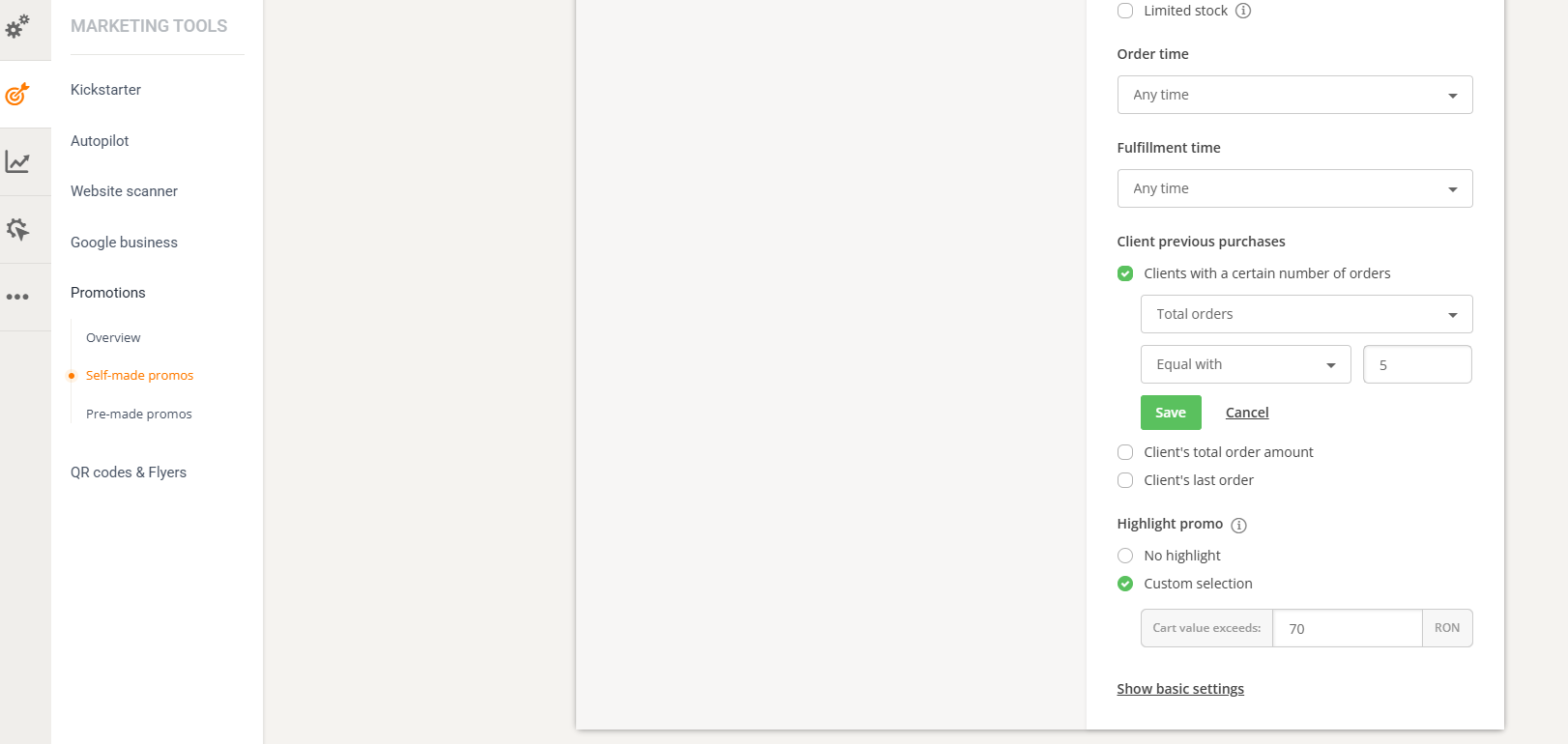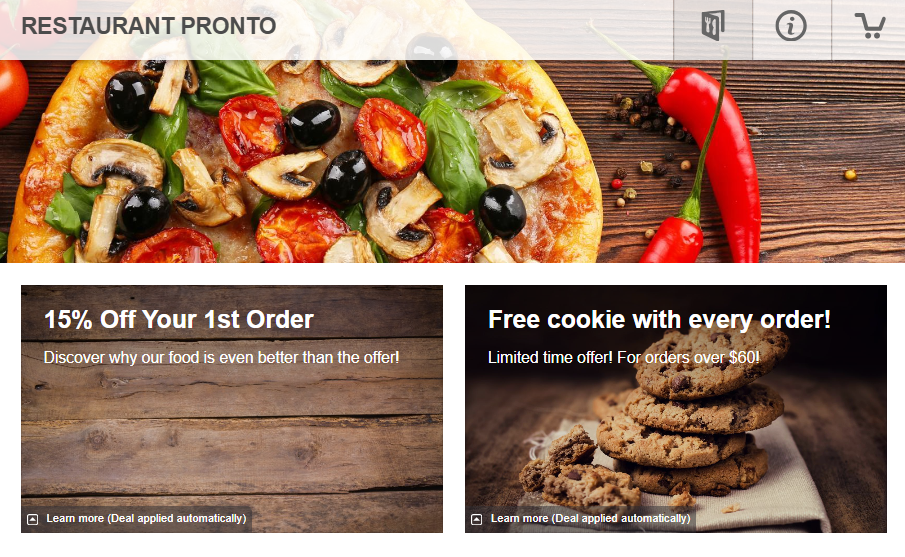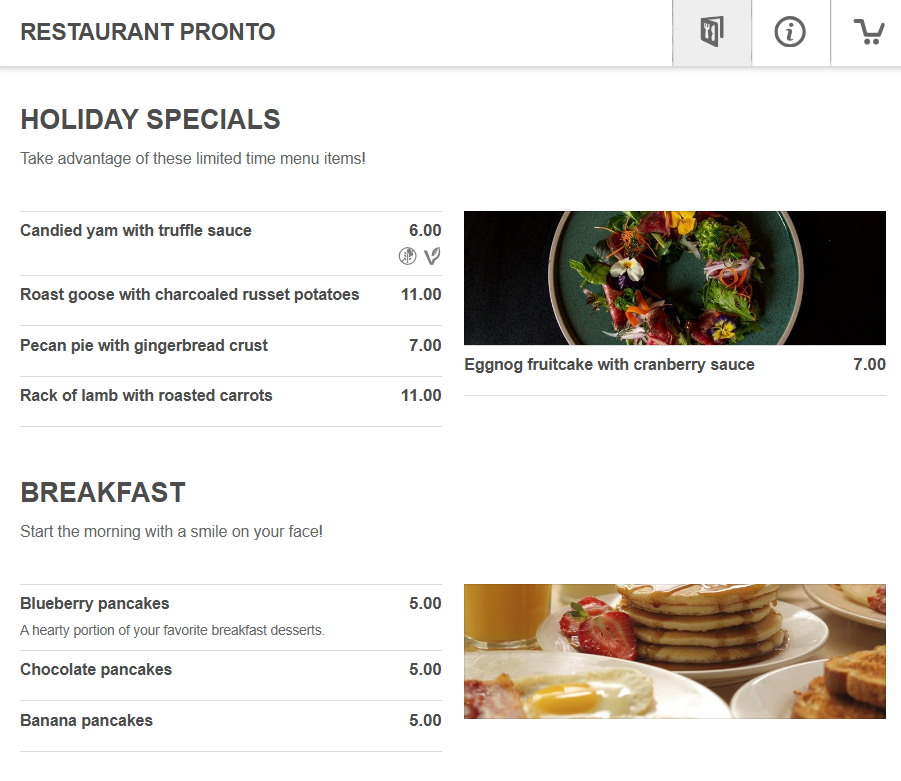- 1.Hire smartly and put together an efficient team
- 2.Reward customer loyalty
- 3.Attract new customers with first-time promos
- 4.Bring in new technologies
- 5.Make connections among local businesses and influencers
- 6.Have a constant social media presence
- 7.Advertise your restaurant offline
- 8.Make customer experience a priority
- 9.Offer consistency, but don’t be afraid to shake things up
- 10.Motivate customers to spend more
With a discouraging success rate, restaurants are one of the most challenging businesses to lead to success. However, don’t let that rate scare you.
While there is no magic formula that guarantees restaurant success, there are some things you can do to give your restaurant the head start it needs. Let’s have a look at these restaurant growth strategies for steady growth over time.
10 Restaurant Growth Strategies for a Successful Business
Follow these effective and easy to implement strategies to learn how to improve your food business:
1. Hire smartly and put together an efficient team
The success of every business starts with the team behind it. So, it should be no surprise that one of the top restaurant growth strategies involves employee acquisition and retention.
Don’t treat the hiring process lightly, and take your time until you find people who will integrate well into the team and help you grow your restaurant.
If every person does their job right, your restaurant will run like a well-oiled machine. Customers will be served the moment they walk through the door, they won’t have to wait for someone to buss their table, and they’ll get their food as and how they ordered it.
Don’t forget that your employees also need your support for things to run smoothly. Ensure they’re not overworked and implement technology that will make their job easier whenever possible.
Related: 12 Restaurant Management Tips for Happy Employees & a Successful Business
2. Reward customer loyalty
Expanding restaurants are successful for many reasons. One of the chief ones is that they know how to get repeat customers. According to a Bain & Company study, the average repeat customer spends 67% more during their 31st to 36th months frequenting that business than in months 0 to 6.
Shortly put, repeat customers spend more money than new customers. This means you need to encourage second purchases and reward customers who’ve been with you for a while, so you don’t lose them to the competition.
You can easily do this by offering regular promotions, discounts, and special offers. Encourage customers to sign up for your newsletter for exclusive loyalty rewards, and they’ll be sure to stick around.
If you’re looking for an easy way to set up attractive promotions, check out our Promotions engine that helps you add attractive offers to the top of the menu in just a few seconds:

You might also like: 12 Restaurant Newsletter Ideas That Will Convert & Engage
3. Attract new customers with first-time promos
Even if returning customers spend more, that doesn’t mean you shouldn’t be focusing on attracting new customers as well. The key to long-term success is to bring in new foodies constantly.
What better way to do that than with a first-time promo? Whether it’s a 15% discount, a free dessert, or a 1+1 deal, this freebie will encourage them to give your restaurant a chance.
First-time promos work exceptionally well with online ordering too. If you want to convert some of your existing brick-and-mortar customers to online ordering customers, invite them to place their first order online with an exclusive first-time promo.
4. Bring in new technologies
Clients expect to have a seamless dining experience whenever they visit a restaurant or place an online order. As a restaurant owner, you have to learn how to expand your food business with the help of new technologies like food delivery and QR codes.
Implementing an online ordering system won’t just help you boost your sales now. It will also ensure continued sales even when your restaurant can’t operate as usual, as it happened during this most recent world crisis.
Offering online ordering is also the first answer to how to scale a restaurant business as it provides an additional source of income.
QR codes are another innovation more and more restaurants are using. They allow customers to simply scan the code to see the menu and place the order.
Watch the video below to learn how to create a free QR code menu for dine-in in just a few easy steps.

Additionally, integrating text-to-speech technology into your digital menus can enhance accessibility, making it easier for visually impaired customers to navigate and order from your menu. This inclusive approach not only broadens your customer base but also shows your commitment to serving all patrons.
However, with these digital solutions comes the responsibility of safeguarding customer data. Pursuing a CompTIA Security+ Certification can be crucial in training you or your IT staff on cybersecurity best practices, ensuring that your digital platforms remain secure against potential threats.
5. Make connections among local businesses and influencers
How to make a small restaurant grow? For you to be a fixture of the community for the long haul, your growth strategy has to include making friends among other businesses and local influencers.
Even if you don’t get anything out of it initially, it’s a good idea to establish a relationship. A simple mention of a business you like on social media can be enough.
Remember when Burger King urged people to order from McDonald’s to support their employees during the pandemic? We’re not saying you should outright promote your competitors, but think along those lines when promoting other local businesses.
The same goes when approaching food influencers in your area for restaurant growth strategies. Get in touch and propose mutually beneficial partnerships or even just introduce yourself with a discount. They’ll be sure to remember you fondly.
Read more: Restaurant Influencer Marketing Guide: Tips for a Successful Collaboration
6. Have a constant social media presence
I don’t think I need to tell you that you should have an account for your restaurant on most social media platforms. It has become clear in recent years that social media is an excellent tool to be included in a restaurant’s business growth strategy.
What I want to tell you, though, is that you should find your voice and create a social media presence that is instantly recognizable as your restaurant. From the things you post to how you interact with your customers, building brand recognition will contribute to your success.
Be consistent with what and how often you post. Don’t disappear from your social media for weeks in a row. Post often, and most importantly, post things that will engage your customers like questions, polls, contests, or giveaways.
Read more: How to Attract More Customers to Your Restaurant Using Social Media
7. Advertise your restaurant offline
As effective as social media is, don’t forget about offline restaurant growth strategies as well. These tactics will never get old. Do you want to know how to grow restaurant sales? Here are some ideas to put your restaurant on the map:
- Print flyers promoting your food delivery service and distribute them around the neighborhood
- Organize events at your restaurant
- Send out press releases when you launch a new service or menu item
- Invite local artists to perform at your restaurant
- Inquire about food and music festivals where you could serve your food
Read more: Back to Basics: 10 Offline Marketing Ideas for Restaurants
8. Make customer experience a priority
Every customer that leaves your restaurant should be satisfied and eager to come back for more. That is the mark of excellent customer service. Ensure every step of the customer journey is perfect, from their first interaction with the waiter to how you handle their feedback.
Speaking of feedback, this is something you should take very seriously. Welcome feedback and use it as a way to improve your dishes and services. Encourage people to leave you reviews on social media or websites like Yelp and TripAdvisor.
Most importantly, reply to all reviews promptly, be they good or bad. It shows you care about making your customers happy when people inevitably browse through your online reviews when looking for a place to eat.
You might also like: How to Respond to Negative Restaurant Reviews to Increase Brand Loyalty
9. Offer consistency, but don’t be afraid to shake things up
There’s nothing wrong with consistency as long as it works. For instance, if your signature pizza is a regular best-seller, it would be silly to change the recipe or remove it from the menu. However, menu expansion and experimentation can have their perks.
Every once in a while, revitalize your menu by adding new dishes or putting a twist on existing ones. Offer limited-time menu items to build excitement and motivate customers to “get it while it’s hot.”
Learn how to strike up a balance between staple things that will make regulars feel at home and new things that will surprise and excite people who visit you for the first time.
Read more: The Benefits of a Seasonal Restaurant Menu & How to Implement One
10. Motivate customers to spend more
Naturally, both short-and-long-term restaurant growth ultimately relies on profit. Luckily, there are a few easy things you can do to get customers to spend more without them feeling like you’re taking advantage of them.
Among the main restaurant growth strategies that will increase your average check is:
- Recommending drinks, appetizers, and desserts since most customers will already probably order a main course.
- Upselling (encouraging add-ons like an extra topping to their burger) and cross-selling (encouraging extras like a glass of wine that would go well with a cheese platter).
- Selling bundles that a family or a group of friends can share.
Read more: How to Increase the Average Check in a Restaurant
Additionally, managing restaurant finances should not be overlooked. Awareness of fast credit score improvement techniques can play a critical role in securing loans for business expansions or revamping existing spaces.
For more information, consider exploring strategies outside traditionally tied to food service and delve into finance management.
Conclusion
As a restaurant owner/manager, you should concern yourself with both short-time and long-time growth. The restaurant industry can be a competitive market, so you have to be on your toes at all times.
Include these restaurant growth strategies into your small restaurant business plan for steady growth over a long period. Consider collaborating with a digital hospitality agency to skyrocket your growth.
